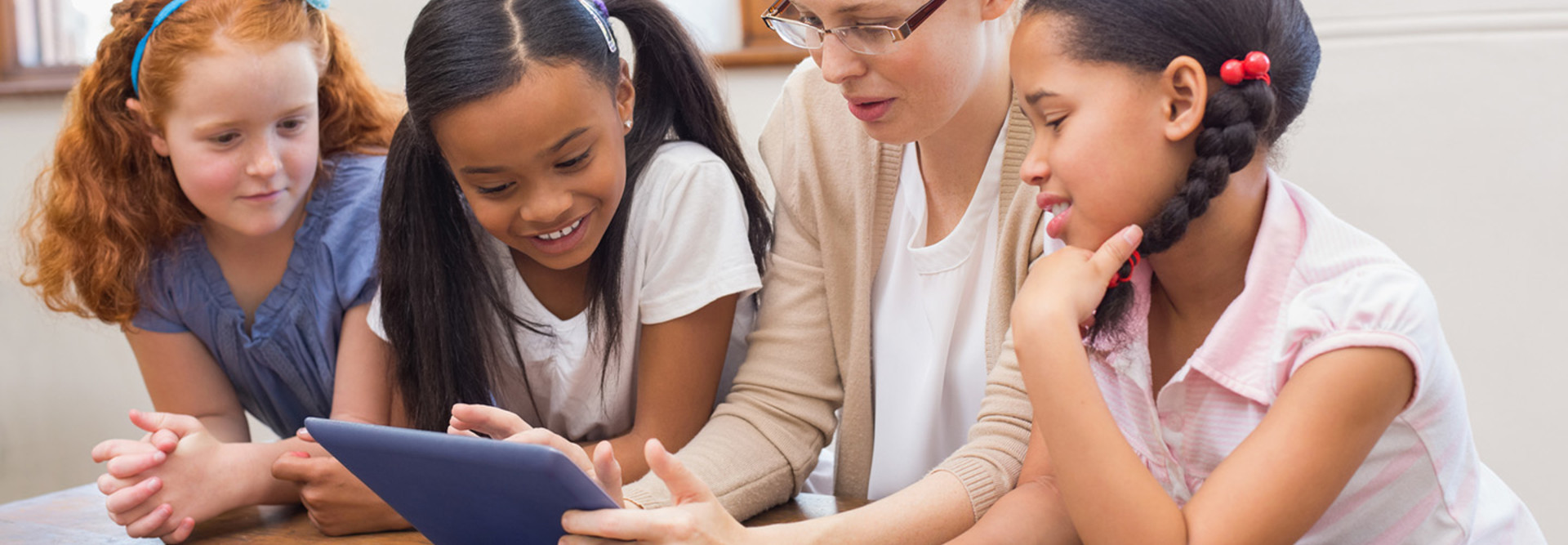3 Ways to Tell If You Are Using Classroom Tech Actively
As more technology floods into classrooms, experts, like those at the ISTE and the Education Department’s Office of Education Technology, are offering more advice on how to use technology effectively.
What’s emerged are two methodologies of using education technology: active use and passive use.
In a brief on teacher preparation, the Office of Ed Tech defines active technology use as allowing students and teachers greater interaction with technology, with a focus on collaboration and content production. Passive tech use, as defined by the office, is simply using tech to take a test or complete a worksheet.
Though technology can provide great efficiencies when used in passive ways, the Office of Ed Tech recognizes that technology has big opportunities for active use.
Here are some ways you can tell if you are using ed tech in active ways.
1. Teachers and Students Explore New Technology Together
One of the examples of active technology use that the Office of Ed Tech provided in the brief was the use of immersive gaming in Albemarle County Public Schools in Charlottesville, Va.
“Students and teachers use the immersive and social aspects of the [game] environment to develop thinking, research, and communication skills to solve complex problems,” reports the brief.
The technology director at Albemarle County Public Schools tells the Office of Ed Tech that, while the teachers weren’t experts on the gaming technology, they were proficient enough in digital literacy to provide students with guidance and coaching to explore the new tool.
2. Students Are Using Tech to Create, Not Consume
For South Carolina teacher Chris Craft, active tech use in his classroom is about students creating a solution to real-world problems, Education Week reports.
“The goal is for each [student] to figure out a problem they see in their lives, or their communities, or the world, and then figure out a way to make a difference,” says Craft in the article.
For Craft’s students, this meant using the 3D printers at their school to create prosthetics for local children.
Though not every school is equipped with this kind of technology, Stephanie Villegas, an instructional coach in Texas, tells Education Week that most classrooms can use technology to help students show what they’ve learned in creative ways like blogging, computer programming or multimedia.
3. Classrooms Look More Like the Real World
Trends like blended and flipped learning can play a role in active technology use when they allow students some choice in how they learn because of the technology they are using, ISTE reports.
By taking advantage of classroom devices and encouraging flexibility and collaboration, ISTE reports that educators can make school feel more like the world that students will be entering when they enroll in college and start their careers.
“If we truly want to prepare our students for the real world, we need to put them in responsive, dynamic environments that reflect life outside a traditional classroom,” Kayla Delzer, a third-grade teacher at Mapleton Elementary in North Dakota, tells ISTE.









